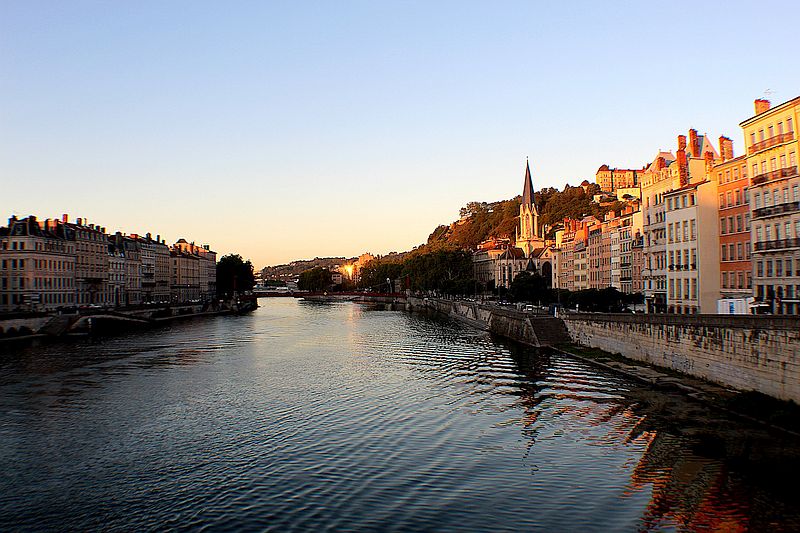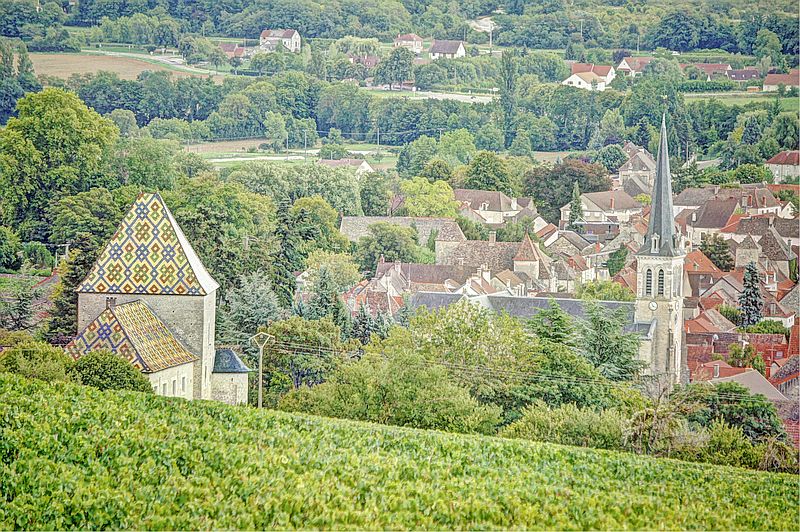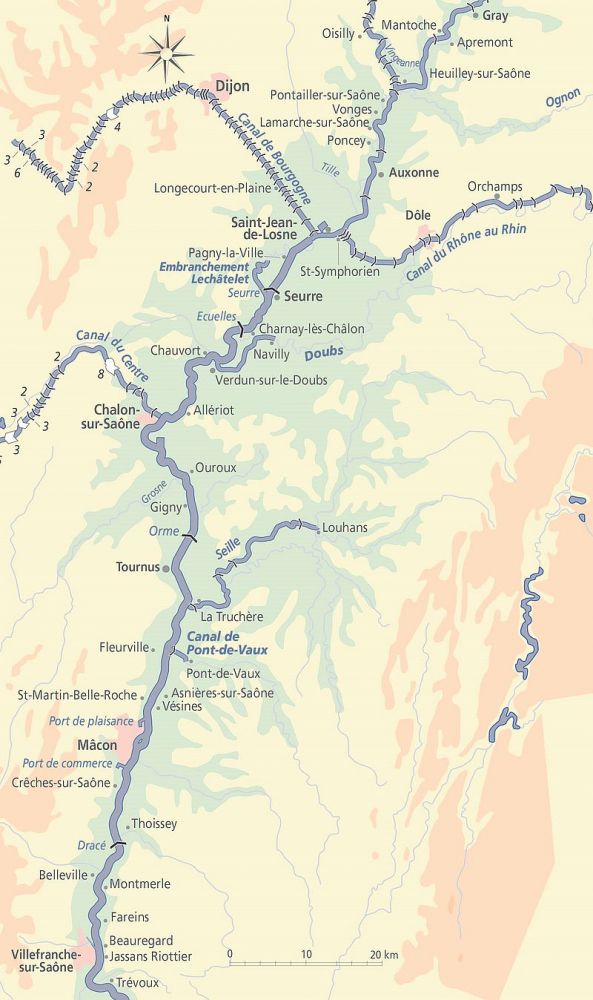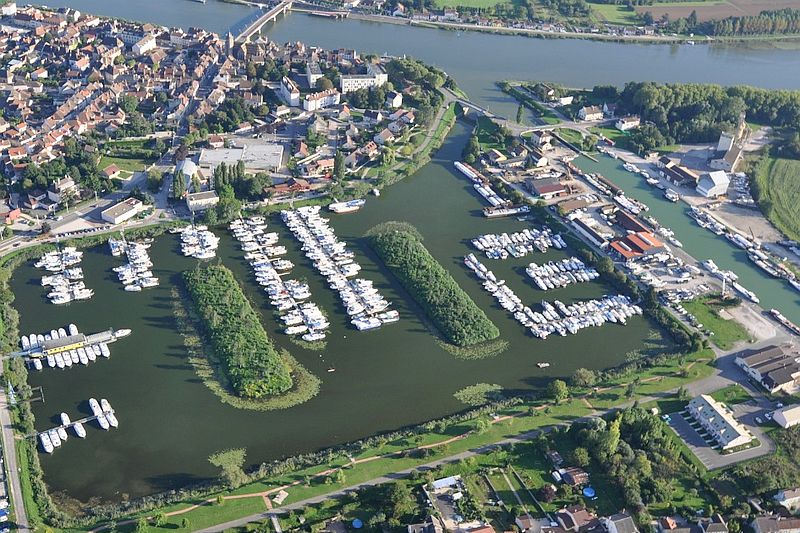Part 1: The Saône River- An Overview
The Saône River flows for 300 miles from the Vosges Mountains to its junction with the River Rhone in Lyons and is navigable for 230 miles between Corre and Lyon. The river has supported trade and commerce since prehistoric times. In the early 19th century, the river was alive with fishermen, floating warehouses, and sand and gravel dredgers. Pleasure boaters began to use the River Saône as early as the late 19th century.
Its upper reaches, north of St-Jean-de-Losne, are known by some as La Petite Saône. Winding through partly wooded areas and picturesque countryside, the upper reaches are popular with recreational boaters, who share the Saône River with only moderate commercial traffic. A number of artificial cuts and numerous locks have been constructed to bypass some sections of the river to create a more direct passage than the river’s natural, meandering route.
The River Saône is generally a placid river, passing through flat countryside, with a calm and constant flow. Boaters can enjoy a landscape which includes wide meadows with grazing Charolais cattle, buildings with multi-coloured Burgundian roofs, and poplars lining the banks.
At times, the Saône River has been considered a boundary between the east and west of France. Along with the Rhone, it continues to be an important north/south water link. Although increasingly used for pleasure boating, it is still a major waterway for transporting goods. It is considered by many to be the most important navigable river in France because of its junctures with many other rivers and canals.
Part 2: Towns & Villages
St-Jean-de-Losne sits at the juncture of the Saône River with Canal de Bourgogne. Even before the advent of the canal, the town was a thriving river port. In 1273, the lords of Franché-Comte laid siege to the town with 500 troops dressed up as women. The town uncovered the ruse and killed all of the attackers. In 1636 80,000 troops of the Holy Roman Empire threatened the town. With 400 citizens and 150 soldiers, to which were added 800 reinforcements from nearby Auxonne, the town miraculously held off the siege. Thereafter the town was known as La Belle Défense. In 1870 a German advance was also turned away. Clearly this is a town which values its independence.
A large basin, once used to store timber being floated down the River Saône , is now a port used for mooring recreational craft, and is today the largest of its kind in France, and an incredible depot for all things to do with barges. Whether you need water pumps, engines or propellers, St-Jean-de-Losne is the place to come! A regatta, or rally, is held yearly for boating enthusiasts. In a restored 15th century house is an exhibition titled “The Barges of St-Jean-de-Losne,” housing a complete collection of barge equipment, hand pumps, bailers, and wooden jacks used to raise boats in dry dock.
Seurre is a lovely port with shops and numerous alleyways to explore. Horse chestnut trees and lovely brick and stone buildings line the waterfront. Local cuisine features catches from the Saône River: trout and river crayfish as well as the Burgundian classics of frogs’ legs and snails in a creamy garlic sauce. The Saône Environmental Museum includes a boat-building workshop, a model of a boat called the flute de Bourgogne and a collection of objects from antiquity found in the river. From Seurre south, the Saône River sometimes reaches a width of as much as 650 feet.
Some say that Verdun-sur-le-Doubs has the finest waterfront quay of any Saône town. A river port established by the Romans in the 1st century AD, the town has a square which overlooks the Saône River and which is lined with small shops. The pôchouse is the local dish which is made with different types of river fish cooked with a dry Burgundy white wine and cream. The prettiest part of the town is the quarter adjacent to the church of St-Jean. The Hotel-Dieu is a hospital dating to the 17th century which is still in use today. Verdun-sur-le-Doubs was once the site of an important shipyard. The town has a Museum of Wheat and Bread, linking back to the days when mills along the river were rife.
Chalon-sur-Saône has been an important port since ancient times; Julias Caesar chose it as his winter headquarters, being linked to the rest of the Empire by both road (it lay on the Via Agrippa) and river. In the 6th century it was the capital of the Kingdom of Burgundy and by the 15th and 16th centuries it was a city both fortified and fashionable. Today it is one of the major cities in the valley and is both a cosmopolitan and an industrial centre. Since the 19th century it has been a centre of passenger boat services and by 1850 17 steam boats carried more than 1000 passengers daily. Between 1889 and 1906 Schneider-Creusot – a historic iron and steel mill with its roots in Chalon, which subsequently became the multi-national conglomerate under the name Schneider Electric – built ships for the French navy – 81 torpedo boats, plus submarines and steam tugs – some of which had to be transported to the Mediterranean on specially-constructed barges.
The town is more famously, however, the birthplace of Nicéphore Niépce (1765 – 1833), the inventor of photography. A museum honouring him displays a collection of cameras and traces the history of photography as well as an engine design, which he called the Pyréolophore and is considered the world’s first internal combustion engine. In 1807 Nicéphore and his brother, Claude, ran a prototype and were granted a patent in the same year by Napoleon after it successfully powered a boat upstream on the Saône River.
Ready to Explore the Saône River?
Guests cruising aboard luxury hotel barges Finesse will have the opportunity to cruise a short stretch of the Saone River and visit some the sites listed above. For more information on our itineraries and the rest of our collection of luxury hotel barge cruises, why not order a free copy of our brochure today or speak to a member of our team directly using our handy Contact Form.
 English
English
 Spanish
Spanish French
French German
German Norwegian
Norwegian Portuguese
Portuguese Swedish
Swedish Italian
Italian Russian
Russian Simplified Chinese
Simplified Chinese Japanese
Japanese



